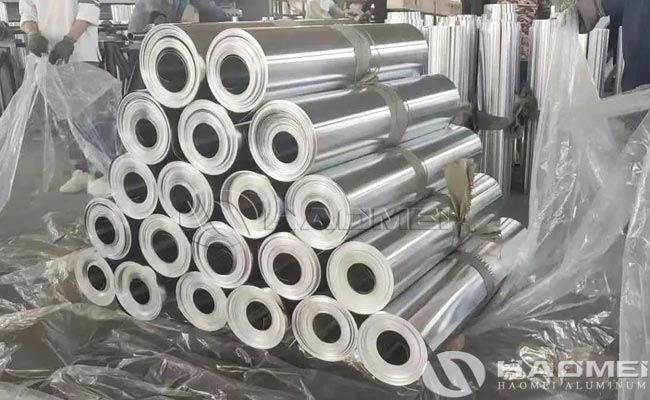Aluminum lagging is a kind of thermal insulation material commonly used in construction, industrial and other fields, with the advantages of lightweight, corrosion-resistant, heat insulation, sound insulation and so on.
In terms of alloy, common aluminium lagging alloys mainly include 1060, 3003, 5005 and so on. Alloy 1060 has excellent processing performance and molding properties, suitable for cold processing molding; alloy 3003 has good corrosion resistance and welding performance, suitable for wet environment; alloy 5005 has excellent tensile strength and corrosion resistance, suitable for occasions requiring higher strength. In terms of state, aluminum lagging sheet usually has H14, H24, H26 and other tempers to choose from, different tempers of aluminum lagging in terms of strength, corrosion resistance and other aspects of the slight difference, can be selected according to the specific needs.

Thickness and width are important factors to consider when choosing aluminum lagging sheet. The thickness ranges from 0.3mm to 3.0mm, and the width can vary from 1000mm to 1900mm. Commonly, the thickness of aluminum jacketing is available in different specifications such as 0.5mm, 0.6mm, 0.8mm, etc., and the width is also available in different ranges, which can be customized according to the specific requirements of use.
The surface of aluminum lagging usually has two forms of plain and embossed. Plain aluminum lagging has flat and smooth surface, with good aesthetics, not easy to adhere to the dust and dirt, suitable for the surface finish has certain requirements of the occasion, such as indoor pipe insulation, exterior wall decoration. Embossed aluminum lagging is often used for pipe insulation to enhance the rust and corrosion resistance of the pipe, while improving the insulation effect. In addition, aluminium lagging sheets can be laminated with different materials, such as poly kraft paper, polysurlyn film, etc., to improve moisture resistance, thermal insulation performance and strength for a wider range of applications.
Advantage of aluminum lagging used for thermal insulation:
- Excellent thermal insulation performance: the thermal insulation material filled inside the aluminum lagging can effectively reduce energy conduction and dissipation, ensuring stable indoor temperature.
- Good corrosion resistance: especially 3003 and 5005 aluminum alloys can resist the erosion of many kinds of corrosive media and prolong the service life.
- Light weight, easy to install: the light weight of the aluminium lagging makes it easy to carry and install, improving construction efficiency.
- Aesthetics and durability: the surface can be customized with a variety of colors and patterns, maintaining the aesthetics and durability for a long time.
Insulation aluminum lagging is widely used in building insulation, industrial equipment insulation, cold and hot pipe insulation and cold storage insulation. In the field of construction, it can be used for thermal insulation of external walls, roofs and other parts; in the industrial field, it can be used for thermal insulation of various equipments and pipelines; in the field of cold storage, it can effectively prevent the cold air from dissipating and improve the effect of cold storage.
In a word, the aluminum lagging has the advantages of light weight, corrosion resistance, heat insulation, sound insulation, etc. It is suitable for construction, industry and other fields. Choosing the right alloy, temper, thickness, width, surface treatment and lamination material can meet different needs and provide better thermal insulation for engineering construction.
live:onlinehcx